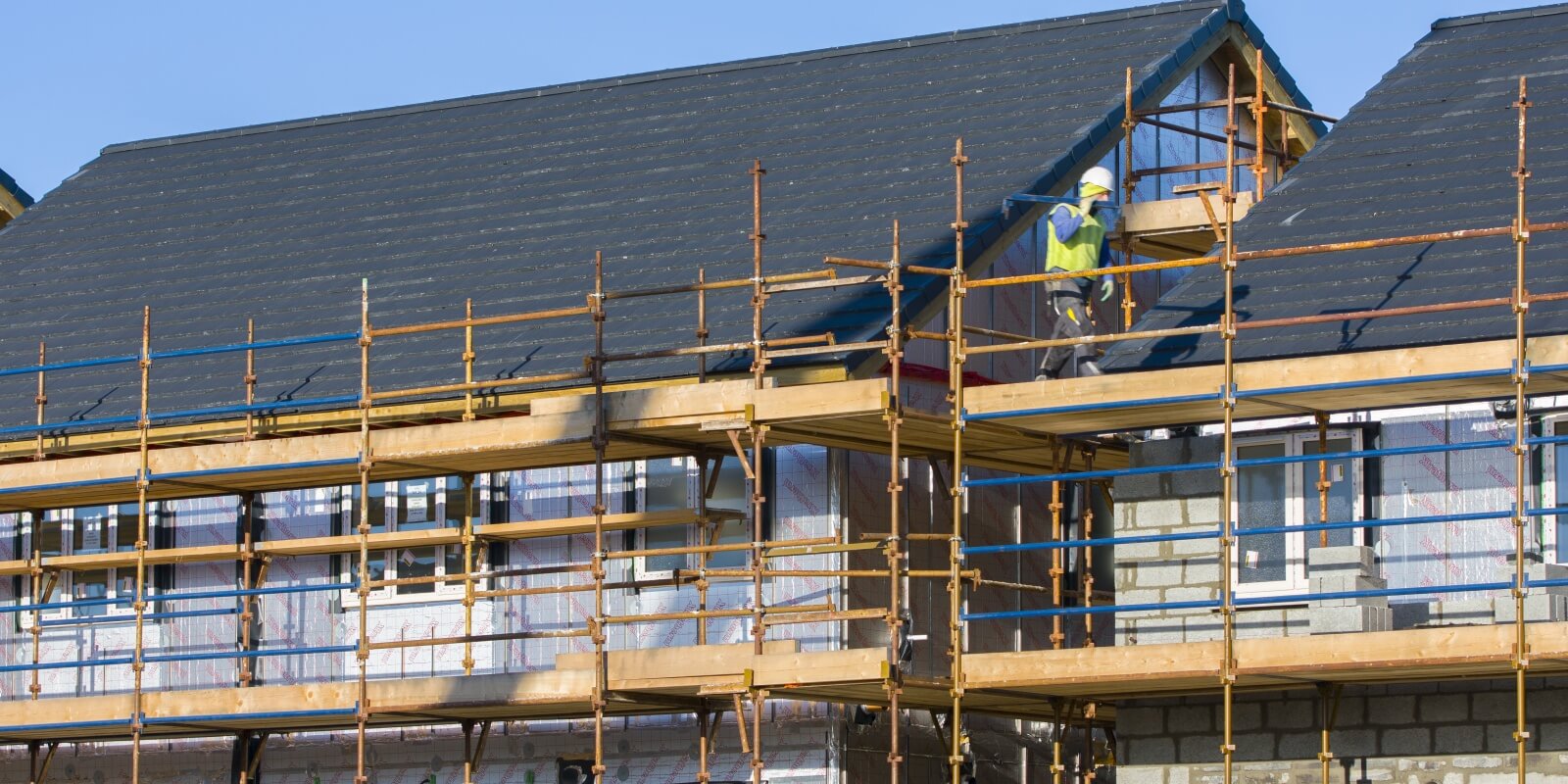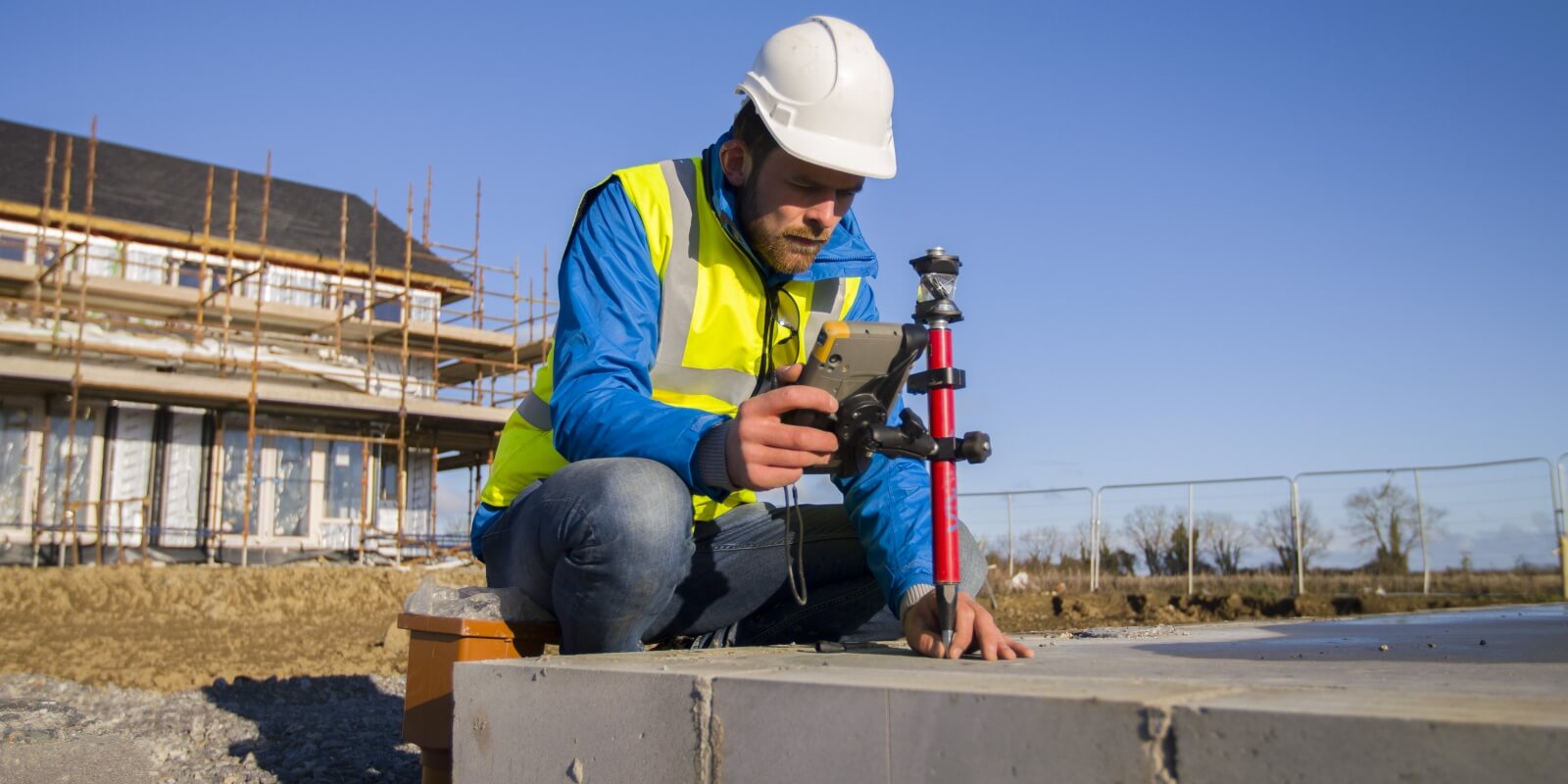Building beautiful homes in a matter of weeks
A rapid build project where precision is paramount

Here’s a question: with our global population growing so rapidly, and with construction as one of the least automated industries, how do we make sure we can provide everyone with a roof over their heads in the future?
Perhaps we’ll find the answer in Ireland, in the coastal town of Donabate, just 14 miles north of Dublin. It’s the same phenomenon on a smaller scale: Donabate has been expanding rapidly over the past decades. There were 1868 inhabitants in 1996; by 2016, there were 7443.
And now, a new neighbourhood is taking shape in just a few months. The innovative minds of Modern Homes Ireland (MHI) are responsible for one of the country’s first ‘rapid build projects’. Director Stephen McManmon, whom we’ve met during a previous adventure in Dublin, [LINK https://www.topconpositioning.com/insights/playing-it-safe-beneath-surfa... ] succinctly describes their work: “We are an off-site manufacturer of low-rise and high-rise residential units.”
More than 100 beautiful ‘modular houses’ will soon be homes to Donabate residents. It all starts at MHI’s production facility in Ballyjamesduff. “We build them here at the factory in modules,” says Donna Geraghty, the company’s lead structural engineer. “Then we ship them 80% finished to site where our on-site team take over, we stitch the modules together, and we complete them for sale. Once a house goes to site, it can be completed in two weeks if it’s a simple house. For more complicated projects, with more stringent fire criteria for instance, it will take a little longer.”
On site in Donabate, we meet with civil engineer Liam Coil, who carries out inspections of slabs on which the houses are to be placed, and also conducts internal inspections once they’re there.
“The difference compared to conventional building methods is we have precision-engineered structures,” says Coil. “Also, our lead-time is quite extensively shorter, and we have one of the highest energy ratings that are achievable in a normal dwelling.”

“Once a house goes to site, it can be completed in two weeks.”
The importance of staying within tolerance
“Currently the lead-time, from the purchase to the finished product being handed over, is four months,” says Liam Coil. The lead-time from a unit being finished in the factory to being handed over on-site, is currently three weeks. We can have a building fully finished externally and internally from start to finish in three weeks.”
In North Dublin, Coil tells us about the on-site team’s process. “We currently survey all slabs prior to the modules being fitted. To do this, we set out a perimeter line. We stake the perimeter line off the slab. Then, we do a full one-meter grid survey on it to get the levels and to see if we’re within the required tolerance. After that, we draw an offset-line from the internal of the steel frame, to give the installers a line to work off, to fit the modules.”
“A challenge we have faced, was finding out slabs were out of tolerance, but using the Topcon equipment we could identify the errors prior to installing.”
Donna Geraghty agrees on the importance of accuracy: “The tolerances we work with are generally half a millimeter to a millimeter. If we exceed those tolerances, once the modules are put together, the house will exceed the footprint. This will have serious impact on the thermal modelling. So, we have to stay within tolerances.”
She shares a story about how a change in software once caused a house to grow by ten millimeters. “It had to be taken apart in the factory and rebuilt within tolerance. That’s how important our tolerances are to us.”

“Precision is paramount. It’s important that the off-site part and the on-site part are carried out in a similar fashion.”
Increased accuracy
Throughout their process, MHI knows how to put GPS technology to good use. “In off-site construction, precision is paramount,” says Stephen McManmon. “The added value is that you’re accurately setting out your frame structure in advance of going to site. The Topcon GT-1000 Total Station helps us increase our accuracy.”
“It’s important for MHI that the off-site part, the units built in the factory, and the on-site part, the units erected on the site, are carried out in a similar fashion,” he adds.
Indeed, on-site, the team works with a Total Station as well. Liam Coil: “The reason we use a Topcon GT-505 on-site is the accuracy we require when installing the units. I have used it regularly for six years and I appreciate the user-friendliness and the ease of setting up. Staking out points, surveying, it is very easy to access and to get to what you need.”
The fact that the team can work to the high tolerances they mentioned, means they achieve a very high standard, says Donna Geraghty. “I’ve been in construction for almost fifteen years, and I’ve always said to my clients: we’re not a factory, we can’t achieve factory conditions on a building site. But now, we actually can.”
And so, dealing with rapid growth of the population, MHI provides a fitting solution. To summarize, as Donna Geraghty puts it: “It’s really innovative: this helps us work much faster than the traditional build.”


